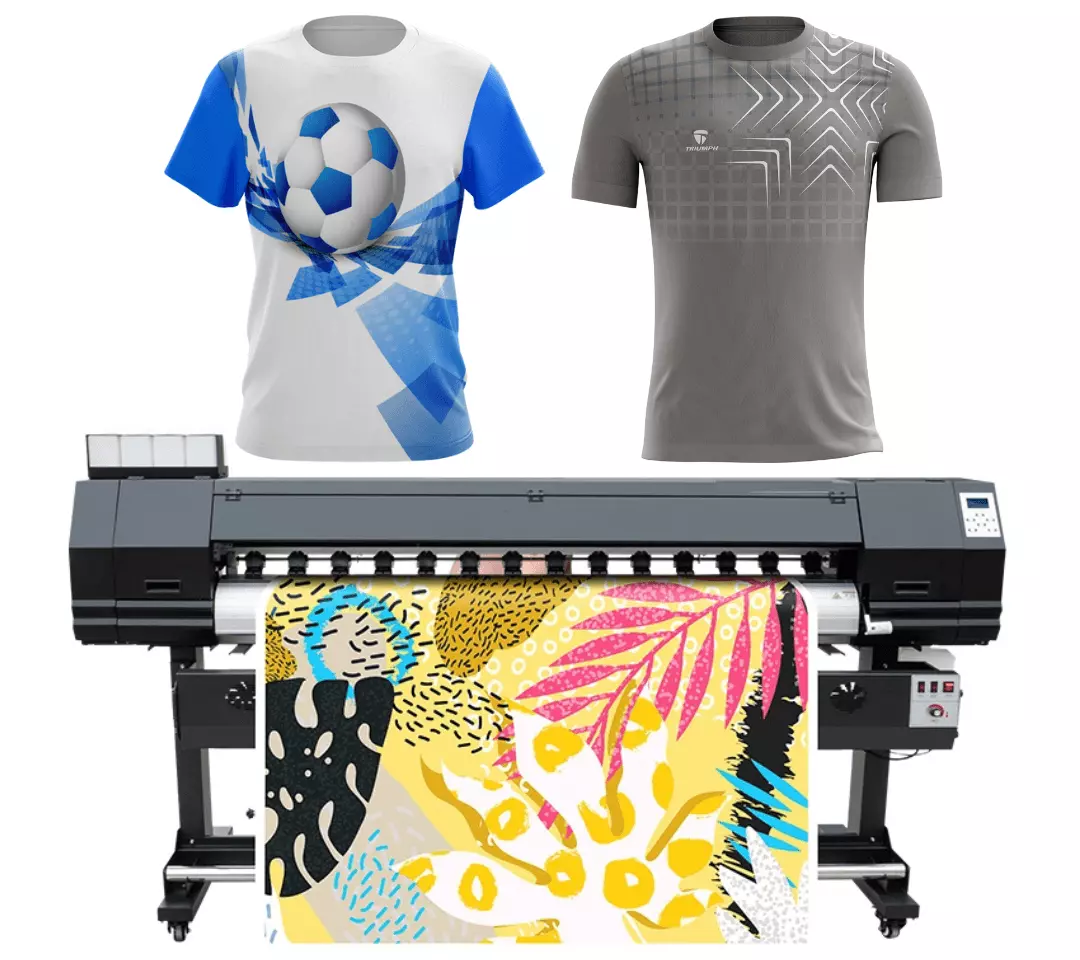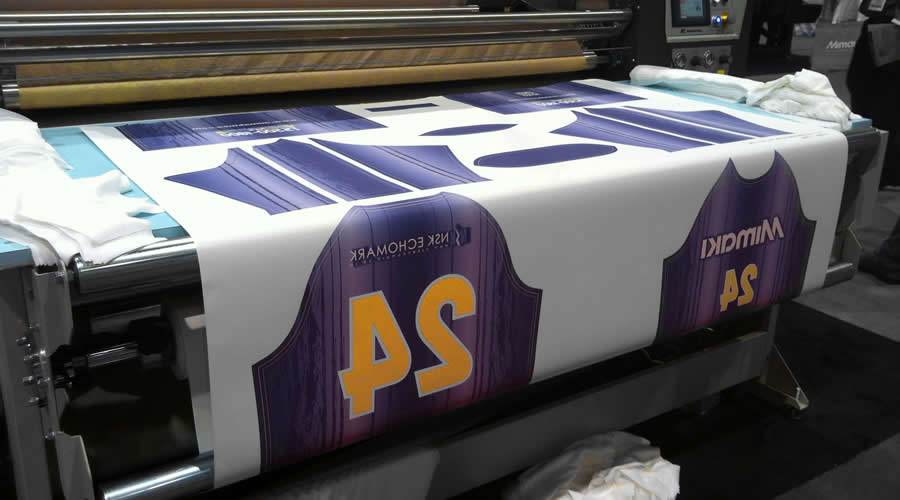Exactly How Screen Printing Revolutionizes the Branded Clothing Market
Exactly How Screen Printing Revolutionizes the Branded Clothing Market
Blog Article
From Typical to Digital: Understanding the Advancement of Towel Printing
The improvement of cloth printing from conventional approaches like block printing and withstand dyeing to contemporary methods such as display and electronic printing marks a significant shift in the fabric sector. Traditional techniques, soaked in artisanal workmanship and cultural relevance, have slowly paved the way to digital advancements that supply unmatched accuracy, effectiveness, and modification. This change not just enhances production capabilities but likewise aligns with expanding demands for sustainable practices. Exactly how do these improvements impact the significance of fabric printing, and what might the future hold for this ever-evolving craft?
Standard Cloth Printing Techniques
In the very early phases of textile manufacturing, standard cloth printing methods served as the cornerstone of material layout, using both performance and imaginative expression. Block printing, one of the oldest approaches, entailed carving intricate styles right into wooden blocks, which were then dipped in dye and pushed onto textile.
Withstand dyeing, consisting of strategies like batik and tie-dye, utilized wax or various other substances to stop color from passing through certain areas of the textile. This method created striking contrasts and detailed styles, often imbued with cultural relevance. Stenciling, an additional conventional approach, involved cutting patterns into a product and applying color with the openings, using an easier yet effective way to create recurring styles.
These typical methods not only shaped the textile market's early growth yet also prepared for future innovations. Each technique reflected the regional and cultural qualities of its origin, protecting and sharing artisanal expertise through generations.
The Rise of Screen Printing
The development of display printing in the very early 20th century marked a considerable departure from typical methods, offering extraordinary adaptability and effectiveness. Screen printing enabled designers to produce complex patterns and lively colors on textiles, which were previously challenging to attain with block printing or hand-painting techniques.
One of the essential benefits of screen printing is its capacity to replicate intricate layouts on a huge range with impressive fidelity. This scalability made it profoundly popular in the business fabric sector, where mass production without giving up high quality is paramount. Display printing fits a vast range of dyes and inks, expanding the scheme of textures and surfaces readily available to designers.
Furthermore, the procedure is extremely versatile, ideal for various material types including cotton, silk, and synthetics. This flexibility, combined with its cost-efficiency for large runs, strengthened screen printing's function as a keystone of modern-day textile manufacturing. Hence, the rise of screen printing reinvented the sector, pushing the limits of what was possible in textile layout.

The Arrival of Digital Printing
Building on the exceptional innovations brought by screen printing, the fabric sector experienced an additional groundbreaking development with the introduction of digital printing. Emerging in the late 20th century, digital printing changed the method styles are moved onto materials, using unmatched adaptability and effectiveness. Unlike standard techniques, which commonly needed considerable arrangement and substantial hand-operated intervention, electronic printing uses computer-aided layout (CAD) modern technology to create elaborate patterns directly onto the material with high precision.
This innovation has actually made it possible for textile producers to meet the growing need for personalization and on-demand production. By removing the demand for plates and screens, digital printing reduces and reduces lead times product waste, making it an extra lasting alternative. The ability to publish complex photos and a vast variety of colors in a solitary pass has opened up new creative methods for designers, cultivating a rise in creative expression within the industry.
In addition, digital printing sustains smaller batch manufacturing runs, which is particularly useful for specific niche markets and startup style brand names. This technological jump has not only improved operational effectiveness yet likewise democratized access to premium fabric printing, setting the phase for future technologies in fabric layout and production.
Contrasting Techniques: Typical Vs. Digital
While both traditional and digital printing methods have their very own special benefits, they vary substantially in terms of process, efficiency, and ecological influence. Standard towel printing, incorporating strategies like block printing and display printing, includes hand-operated labor and elaborate workmanship.
On the other hand, electronic printing utilizes check here innovative modern technology to move layouts straight onto material utilizing inkjet printers. This method supplies exceptional precision and a vast variety of color alternatives, making it possible for complex and extremely in-depth layouts. Digital printing is substantially faster, enabling fast turnarounds and just-in-time production, which minimizes the need for large stock storage space. Furthermore, it supports personalization and small set manufacturing, catering to contemporary consumer demands for tailored items.
From an ecological perspective, electronic printing is generally more sustainable. It makes use of much less water and produces very little waste contrasted to traditional techniques, which typically involve comprehensive washing and dyeing processes. As a result, digital printing is progressively preferred in an era where ecological factors to consider are critical.
Future Fads in Fabric Printing
One considerable pattern is the raised application of electronic printing modern technologies. Digital textile printing is anticipated to control the market, driven by its performance and flexibility to consumer demands for personalized and limited-edition products. Branded clothing.

In addition, the incorporation of clever fabrics, which integrate digital elements right into fabrics, is readied to reinvent the marketplace. These fabrics can provide additional capabilities such as temperature level policy, health tracking, and interactive attributes. As modern technology remains to advancement, the junction of electronic printing and wise fabrics will open new opportunities for practical and imaginative applications in cloth printing.
Final Thought
The evolution of cloth printing from standard methods to electronic developments marks a substantial transformation in the textile sector. While conventional methods highlight artisanal workmanship and social heritage, electronic printing provides exceptional accuracy, performance, and modification. This shift not only boosts production capacities but additionally supports sustainability campaigns. Future trends are likely to continue integrating innovative technologies, even more redefining textile style and production procedures to meet ecological factors to consider and modern needs (Branded clothing).
The improvement of cloth printing from traditional approaches like block printing and withstand dyeing to modern methods such as screen and electronic this page printing marks a significant change in the textile industry. Display printing allowed developers to produce complex patterns and vibrant colors on textiles, which were formerly testing to accomplish with block printing or hand-painting approaches.
Building on the remarkable improvements brought by display printing, the textile sector experienced an additional groundbreaking development with the advent of electronic printing. DTF printing. Traditional towel printing, incorporating methods like block printing and display printing, involves hands-on labor and intricate craftsmanship. As innovation continues to advancement, the junction of digital printing and wise fabrics will certainly open new methods for practical and creative applications in fabric printing
Report this page